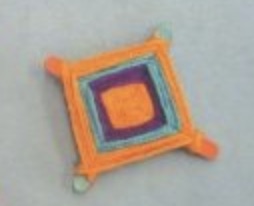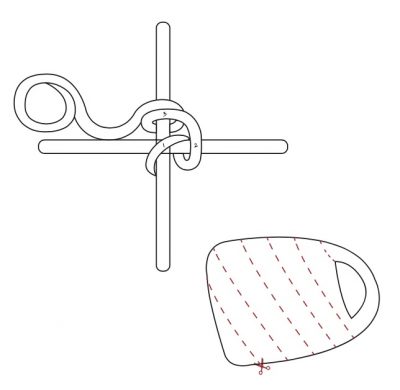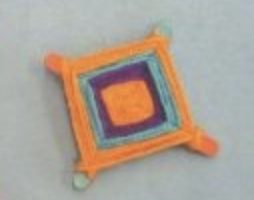About the Author Introduction: Introduce yourself to the audience. Write in the third person, briefly introduce yourself and your art, talk about your affiliation to Art Sphere, and why you are passionate about volunteering with ASI.
About the Author: Jennifer is a violinist and music teacher. This is her first semester volunteering with Art Sphere. She loves to work with students to help them discover their voice through music and self expression.

Description: Describe the project and why it is relevant to teach.
Example: God’s Eyes are created in certain cultures as gifts to children coming of age, or for another’s home. Although meanings differ between cultures, God’s Eyes symbolize an understanding of the unknown.
Author: (include your name and any other assistants or teachers who gave input)
Grade level or Target Age Range: 1st Grade-3rd Grade (can be adapted to a younger age)
Historical Art Examples or References: Take example to class (images to use as reference can be found below) Include a link https://en.wikipedia.org/wiki/God%27s_eye
Example: Ojos are found in Mexican and Mexican American Communities made by Indigenous (Huichol and Tepehuan Indians) and Catholic Peoples and have been made since the 16th century.
Vocabulary: Define vocabulary and use these words for pretest and post test
Example: Symmetry, Asymmetry, Flow, Pattern, Proportion, Unity
Materials: Popsicle Sticks, Yarn (various colors can be used) Chop sticks or sticks from trees and plastic bags can be used as an alternatives
Anticipatory Set: When a person comes of age, what kind of
celebration or gift do they receive?

Demo/Directions: Roughly plan amount of time it takes to do each procedure.
Include video link if helpful https://www.youtube.com/watch?v=g1cHW4bzo2o
Example:
1. Introduce the project and explain the background of it.
2. Have the materials handed out while showing the example.
3. Ask the older children to help the younger children, if needed.
4. Glue the sticks together, or tie them together.
5. Demonstrate the weaving technique that will be used.
6. Once done, have the children present their different creations.
7. Talk about how something easily created can have a deeper meaning and be shared with others.
Discussion: Life Applications – discuss how the lesson can apply to non-art related experiences or other types of knowledge.
Examples:
1. Sharing something meaningful through an object.
2. Discuss something about the project that can further lead to an understanding of cultures and others.
*Example: Ojo’s represent the 4 directions (East, South, West, North) and 4 seasons (Spring, Summer, Fall, Winter) and the 4 stages of life (Birth, Adolescents, Middle age, Old Age/death)
Instructional Reflection: Which instructional tools or strategies interested or helped these students learn most? What additional techniques tools or materials could be used to better support student learning? What adaptions could be made to this lesson for students with different needs levels or skill sets?
1. If the age group varies greatly, the group can be separated by age to better instruct them or help them.

